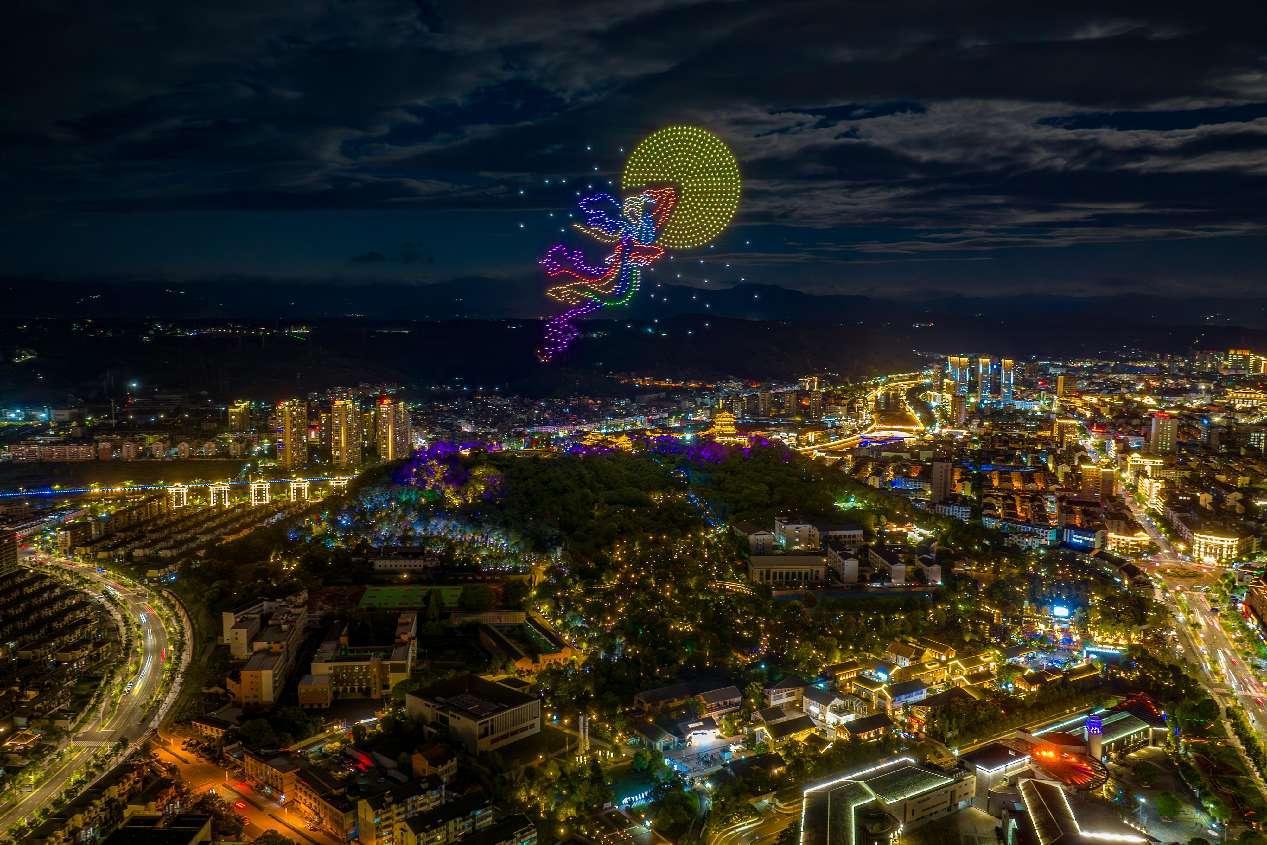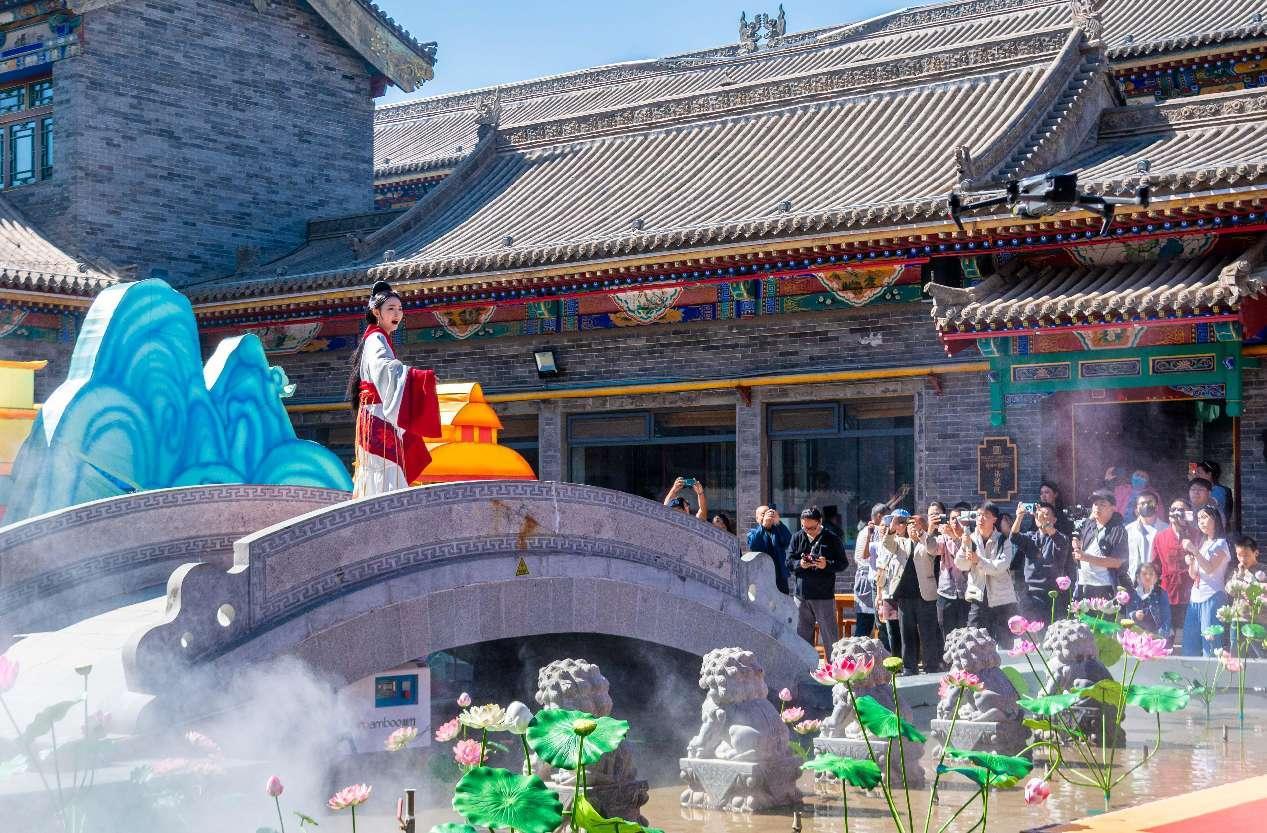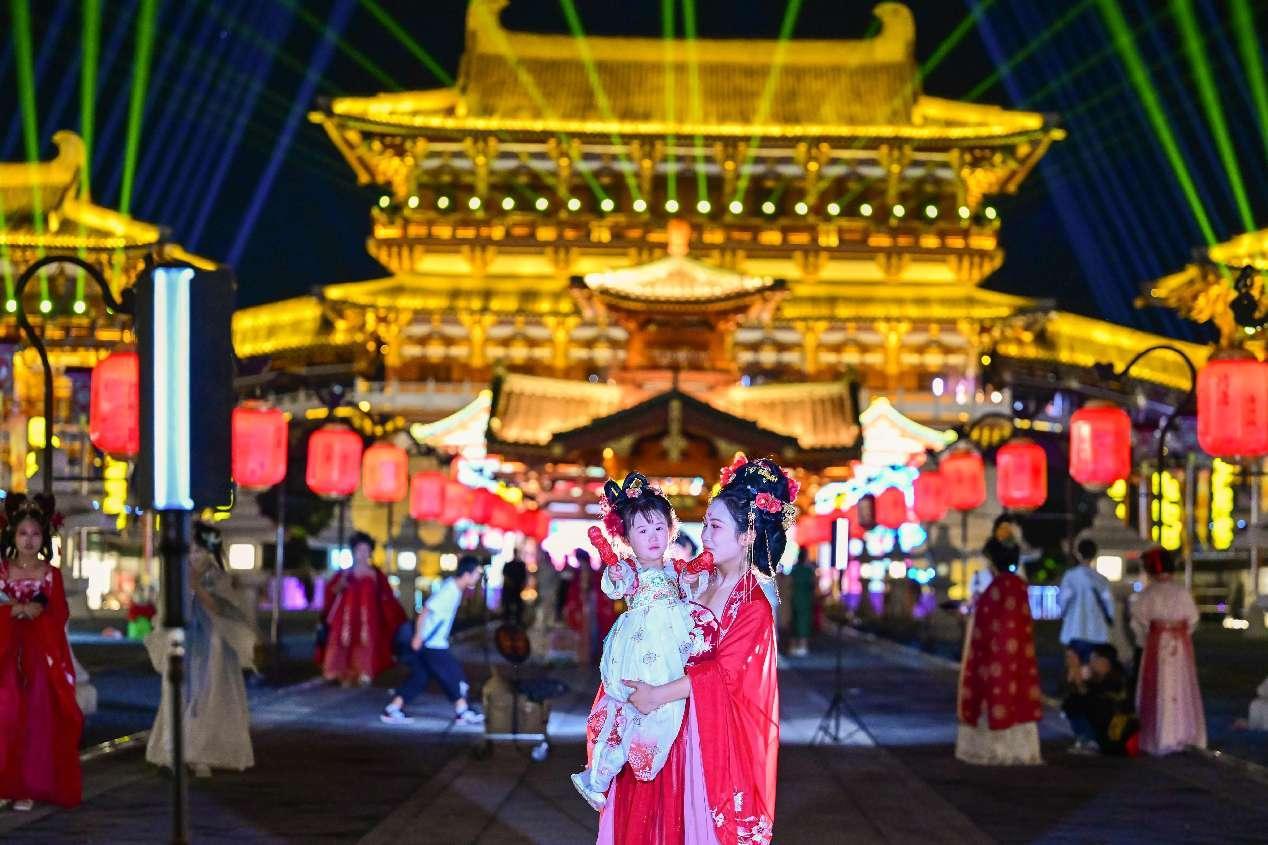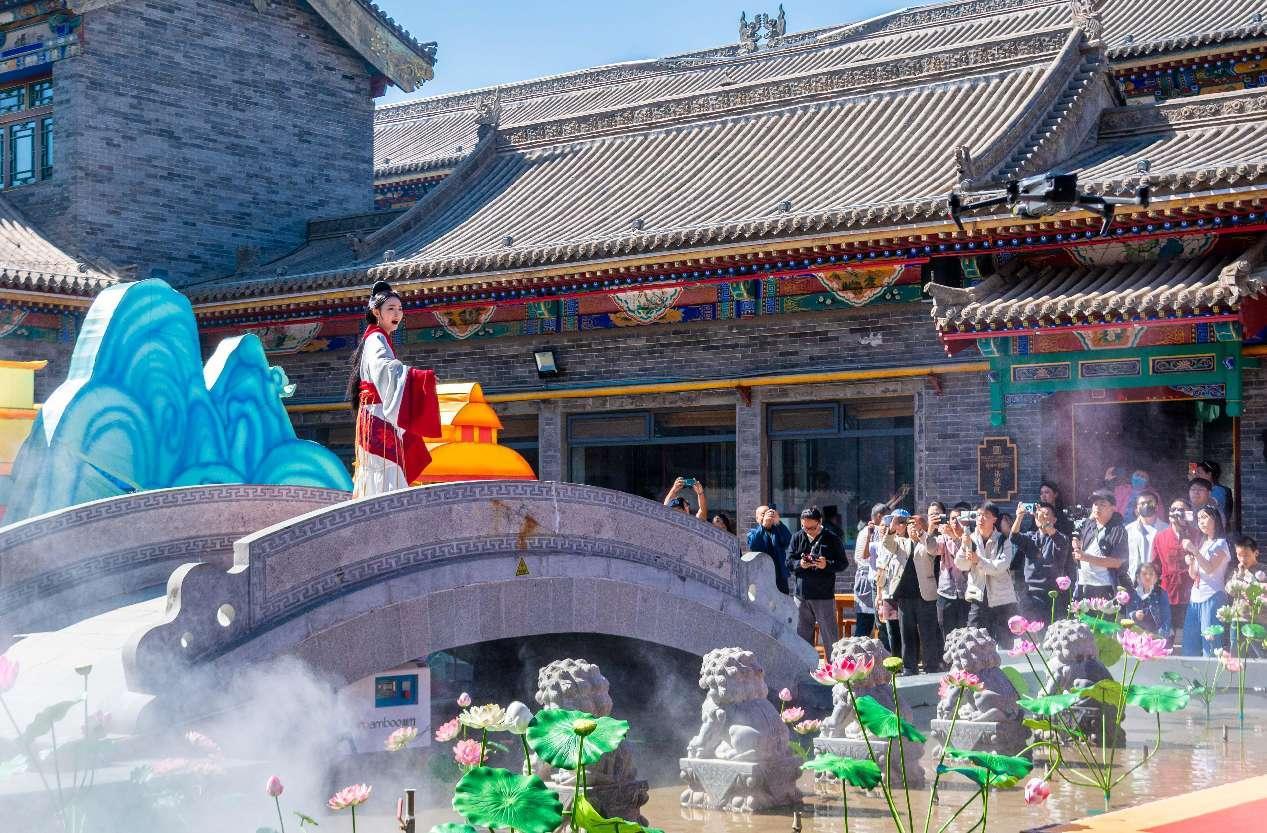September 27th – – In the Jingyuetan scenic spot in Changchun, northeast China’s Jilin province, a fountain show captivated many tourists. In the center of a square, Chen Jiamin, a tourist from Heilongjiang province, which neighbors Jilin, was posing for photos with the performers of the fountain show.
“Every few steps, there’s a new activity to experience. I’m so immersed in the Mid-Autumn Festival atmosphere here,” Chen said.
Focusing on traditional customs and creating immersive experiences, various regions across China actively introduced new cultural and tourism products, models, and consumption scenes during the recent Mid-Autumn Festival holiday, to better meet the diverse needs of consumers.
According to data from the Ministry of Transport, on Sept. 15, the first day of the holiday, Some 215.92 million passenger trips were handled by China’s transportation sectors, up 37.9 percent year on year.
This year, China’s tourism market has steadily rebounded, with immersive experiences powered by smart technology becoming a new trend. Leveraging diverse settings like scenic spots, museums, and pedestrians, and incorporating technologies such as artificial intelligence, holography, and augmented reality, immersive tourism has introduced new products, scenes, and experiences, enriching people’s travel options and contributing to the high-quality development of the tourism industry.
In a smart tourism immersive experience hall at a tech and art museum in Pingyao ancient city, north China’s Shanxi province, a light show is staged to present the charm of traditional culture to visitors. The light show employs 16 projectors, which project historical scenes onto a massive hemispherical screen, creating a “time travel” experience for visitors and “transporting” them to historical sites and ancient trade routes where camel bells ring.

The “Land of Dramas” immersive theater complex in Zhengzhou, central China’s Henan province saw over 4 million visits this summer. With 56 chessboard-like courtyards, 21 sub-theaters and 6,500 plays, it presented a cultural feast to tourists.
“There is always something different here. Every visit brings new feelings and experiences,” said Li Yi, a local resident in Zhengzhou.
Chen Hong, deputy director of the Key Laboratory of Interactive Technology and Experience System under the Ministry of Culture and Tourism at Beijing University of Posts and Telecommunications, noted that compared to conventional static displays, immersive tourism, enhanced by technology, provides a more comprehensive interpretation and expression of culture. This better satisfies the evolving needs of tourists for cultural experience while opening up new market opportunities, Chen added.
This summer, immersive experience programs incorporating virtual reality (VR) technology have blossomed across the country. According to statistics released by on-demand local services provider Meituan, the number of orders for VR experience programs during the summer surged by 144 percent year on year, and the search volume for “immersive experiences” saw a significant rise, with consumers under 30 accounting for more than half of the demand.

An immersive party event hosted at the Yellow Crane Tower, a renowned historical site in Wuhan, central China’s Hubei province, has attracted a number of foreign visitors. The party features a unique cultural blend of Eastern and Western music, clothing, crafts, and cuisines, creating a vibrant cultural feast that builds a bridge of friendship between East and West.
Zeng Bowei, a professor at Beijing Union University, divides the current immersive experience programs in the cultural and tourism market into two types.
The first includes independently operated immersive products, such as Sleep No More Shanghai, which blends theater with immersive experience.
The second type enhances visitors’ immersive experiences by integrating new technologies with performances, facilities, and activities at scenic spots, such as a light show at Slender West Lake in Yangzhou, Jiangsu province, and the Flight Theater in Changbai Mountain, Jilin province, which simulates a flight over the mountain.
According to the Specialized Committee of Immersive Smart Tourism of the China Culture and Entertainment Industry Association, immersive tourism experiences characterized by high-tech and creative content, as well as strong interaction, are particularly popular with tourists, especially the younger generation. These immersive programs have become a new hotspot in China’s cultural and tourism consumption market.
An expert stressed that while technology is a tool, it is the inherent resources and cultural appeal of a destination or activity that are key to retaining visitors. Tailoring digital technology to align with local cultural and tourism resources is crucial for creating successful immersive products, the expert added.
An immersive Tang-style cultural block in Xi’an, northwest China’s Shaanxi province has launched several cultural and tourism activities this summer, including a carnival co-launched with popular online game Westward Journey, which attracted significant attention from tourists, especially younger audiences. With these events, the cultural block saw over 7,000 visits per day this summer.

By Wang Ke, People’s Daily
Source: Global Times Online

